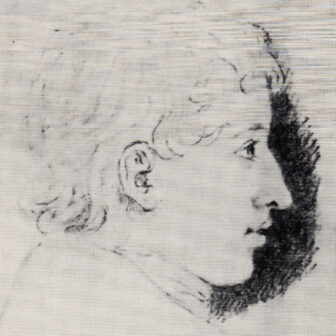
I have always been drawn to folklore. Ever since I was a child, my mother would tell or read me stories. I have had a special place in my heart for the ancient tales of strength and cunning, of magic and redemption that play out amongst a backdrop of ancient castles and magical forests. Fairies, witches, queens and kings, talking animals, and more, populate these stories, often helping to convey a deeper meaning in the tale. Themes of morality, selflessness, and generosity run deep, reminding us that we must be prepared to help our neighbors, and should we not, well, then there is a myriad of punishments the supernatural world is ready to dole out to us.
Often these stories are also stories of love.
Like most queer people, I have to “translate” most stories to better fit my own life experience. When a prince and princess fall in love in these stories, I know I am not the target audience for such a tale, and yet I have learned to adapt them so I can also participate in their collective meaning. Though I am not represented, I can see myself in either role and because I am a human being with the capacity for empathy, I can feel the pull of their love even though it does not look like the love I would long for in my life. For those of us who are outside the majority, it can feel somewhat isolating to always have to make such translations. This is why it is so very important to know that we also have our own stories.
Recently I have re-immersed myself in old fairy tales as I do research for a project I am working on. In the course of my research, I was surprised to learn that the Brothers Grimm, Jacob and Wilhelm, much lauded for their immense contributions to the collection of folklore, had a gay brother, now largely forgotten. Ferdinand Grimm was the youngest of the three. At eight years old their father died, leaving Ferdinand in the care of Jacob, an arrangement that has been described as “controlling.” At the age of 23 he came out to his family and was promptly turned away. (Letters between the older brothers reference his “deviant life,” and “incurable misfortune.”)

Ferdinand Phillip Grimm (December 18, 1788 – January 6, 1845)
Though Ferdinand was an accomplished folklorist in his own right (having published works under various pseudonyms) and even though it is due to his efforts that many stories survive today, he has largely been regulated to obscurity while his older brothers have taken all the credit. And now, at least for me, he joins the ranks of the Rainbow Dead.
What really interested me, however, and the original reason I wanted to write this piece in the first place, is a book I found purporting to be traditional folktales with LGBTQ+ characters. These are not simply folktales reimagined with queer characters, wonderful as those are. These are stories that traditionally had characters whom today we would understand as being LGBTQ+. They are not minor supporting characters, but the main protagonists of the stories and through their experiences we get an opportunity to visit a sort of ancestral queer consciousness.
Tales from Beyond the Rainbow by Pete Jordi Wood is an important contribution to our collective queer history. This collection of ten stories from different cultures offers us a glimpse into a time long, long ago where we as queer people were very much present and even worthy of our own narrative. The revelation that queer characters have been around much longer than most people realize gives way to the realization that the real reason most of us have never heard of these stories is that they were actively suppressed by folklorists and academia alike. But thanks to the work of open-minded folklorists like Wood more and more queer stories are coming to light.

In the tales selected for inclusion in this book are depictions of same-sex love and gender transformation. Thy are not all happy, though many of them absolutely are, giving us the queer happy endings we have been yearning for. This was really helpful for my own inner little boy, who often dreamed of marrying a handsome prince but had to keep that to himself.
I appreciated the pains that the author took in order to accurately represent the traditional stories and their themes, while also updating the language to better represent our current understanding of things like sex and gender.
I also really liked how Wood included notes at the end for each of the stories, explaining how each retelling may have differed from the original, explaining his reasoning but also serving to reassure the reader that no trickery was afoot: these characters were queer from the beginning, and just need a sensitive researcher to discover what had been hiding away for so long.
As we celebrate Pride month, let us take pride in knowing that not only have we always been here, but our stories have been here too.
The Wild Hunt is not responsible for links to external content.
To join a conversation on this post:
Visit our The Wild Hunt subreddit! Point your favorite browser to https://www.reddit.com/r/The_Wild_Hunt_News/, then click “JOIN”. Make sure to click the bell, too, to be notified of new articles posted to our subreddit.